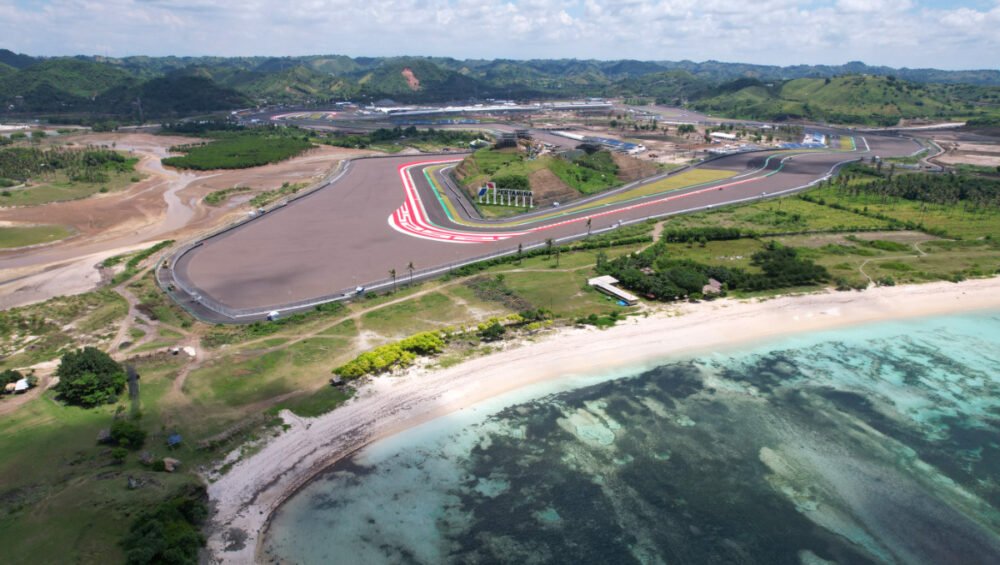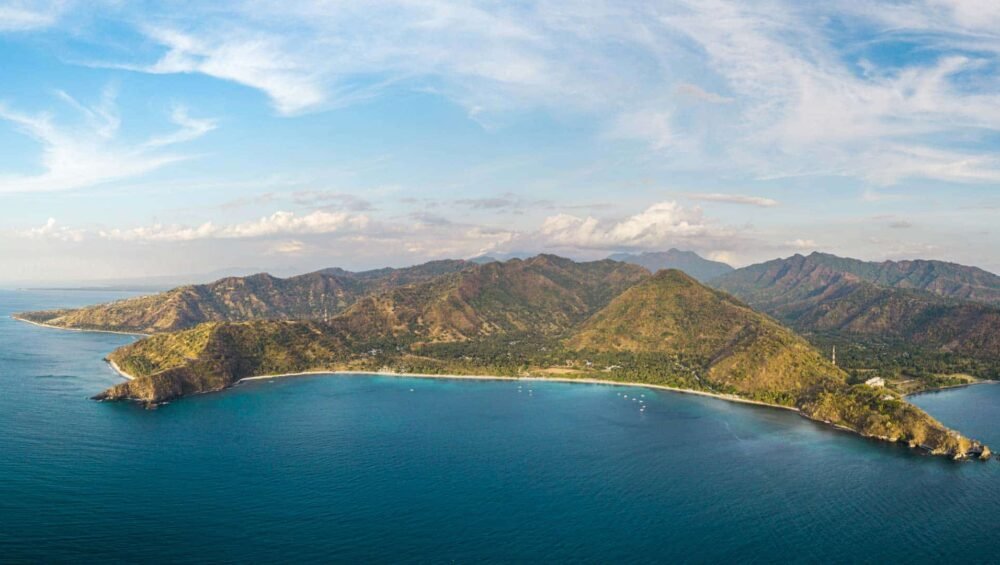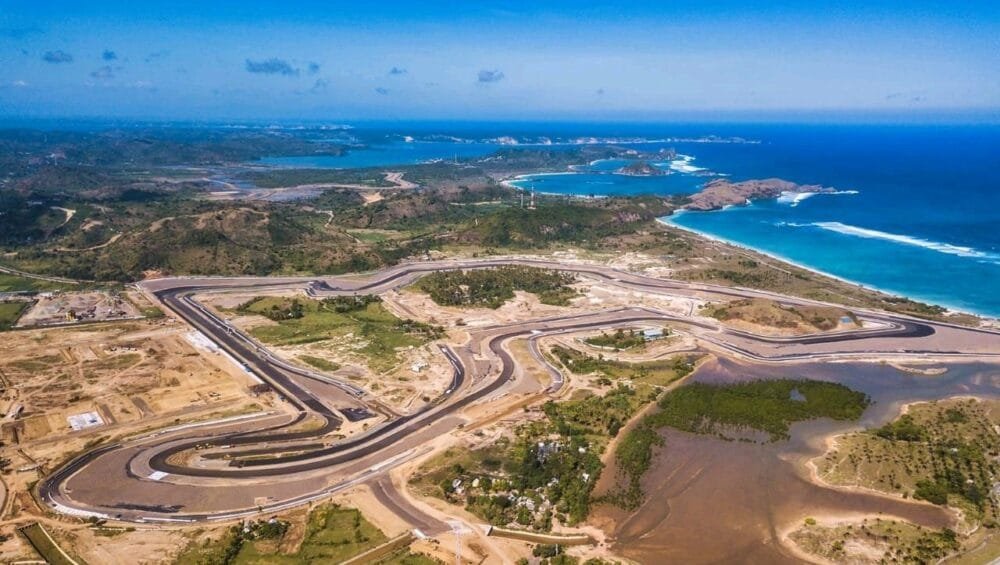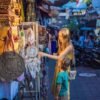Mandalika, Indonesia
Over 17,000 islands spread between the Pacific and the Indian Ocean; more than 600 ethnic groups with about 700 spoken languages bridging the continents of Asia and Australia; a multitude of amazing landscapes and biodiversity stretching along the equator line; this is the wonderful Indonesia, a land of endless spectacular wonders!
Situated at the heart of the world’s precious Coral Triangle and along the Ring of Fire, Indonesia’s countless wonders stretch from mountain tops all the way to the bottom of its vast seas. The diverse landscapes of Indonesia include the legendary getaway that is Bali, as well as Labuan Bajo, a tropical paradise lying on the northwestern tip of East Nusa Tenggara. Various unique wildlife such as the exotic komodo dragons, the jovial orangutan, the majestic cendrawasih – a bird of paradise – also lives among the rich landscape of Indonesia.
Far away from Jakarta, the capital city of Indonesia, you can find an astonishing gem featuring some of the most enchanting tropical panorama known as Mandalika. Lying along the southernmost coast of Lombok, West Nusa Tenggara, in Mandalika you are able to find breathtaking beaches, eye-soothing green hills, as well as a thrilling racetrack.
Official Programme
Grab your Official Programme! It’s over 70 pages of jam-packed, must-have content brought to you from inside the MotoGP™ paddock. Along with a series of spectacular photos and updated graphics, each publication includes the Grand Prix timetable, a circuit map, all the information you need about your favourite teams and riders, plus an ‘Inside MotoGP™’ feature with up-to-date stories from this week in the Paddock.
There are guides to all three Grand Prix classes – MotoGP™, Moto2™ and Moto3™ – as well as a Riders Guide, which will help you match names and faces, and riders with their new 2022 colours! The Official Programme is the perfect guide to the events that will unfold over a race weekend!
Why we love Lombok
A circuit surrounded by spectacular tropical view. Pertamina Mandalika International Street Circuit can be found on the southern edge of Lombok, West Nusa Tenggara. Situated along the mesmerising coastline of Mandalika, the Pertamina Mandalika International Street Circuit offers wonderful tropical scenery and unforgettable experiences. Indonesia itself is a country with the second longest coastline in the world, boasting a total length of 54,716 kilometers. Lombok is also strategically located. You are able to land here through Zainuddin Abdul Madjid Lombok International Airport in Praya District, or land through I Gusti Ngurah Rai International Airport in Bali, then reach Lombok by using a ferry.
With many hotels and resorts available across Lombok, you can choose to spend the night along near the gorgeous coastline of Mandalika or any other areas around the island. You can even stay at several unique hotel and resorts available in Bali if you want! Pick between a multi-story hotel with a panoramic view of the city or a luxurious resort with a private infinity pool overlooking the vast blue sea. A camping ground, as well as other special accommodation options, will also be available near Pertamina Mandalika International Street Circuit for the duration of MotoGP™’s visit.
Useful information
Capital: Jakarta
Time Zone: GMT +7 (Jakarta); GMT +8 (Mandalika)
Currency: Rupiah (sign: Rp, code: IDR)
Language: Indonesian (Bahasa Indonesia)
Electric Plug Type: C and F
Important Telephone Numbers:
Police/General Emergencies: 110 or 112 (from satellites and mobile phone)
Ambulance and Medical Emergencies: 118 or 119
Search and Rescue: 115
Call Operator: 100 and 106 (Domestic); 101 and 107 (International)
Tourist Information: +6221 2828899 (Bureau of Public Communication of the Ministry of Tourism and Creative Economy)
Websites:
Exploring Mandalika and other stunning spots in Lombok
Once a surfer’s secret, Mandalika Beach in Lombok has been unofficially dubbed as the ‘new Bali.’ If you’re looking for another tropical escapade other than Bali but don’t want to compromise the stunning views and magnificent beaches, then Mandalika is the perfect place for you! A 1,250-hectare sanctuary, Mandalika features upscale resorts, spas, and fantastic food.
You can also enjoy several exciting activities at other Lombok’s best spots! Sail along the pristine waters of Tanjung Bongo, rejuvenate yourself at yoga retreats available around the island, take an adventurous trip to the top of Mount Rinjani, or do an island hopping to Bali or even Labuan Bajo.
Tips for Visiting Lombok and Wonderful Indonesia
Always bring some sun protection, an umbrella or raincoat with you as the weather is unpredictable. Please be aware of the changes in weather especially in some areas. Bug repellent is also mandatory to avoid uncomfortable bug bites.
ATMs can be found easily, especially in tourist areas and big cities. When you are exploring the remote areas of Indonesia, it is better by having some cash in Indonesian Rupiah. Remember to only change yours in the legal money changer to avoid scammers.
Most public places are offering WiFi in Indonesia. But if you want to explore the neighborhood, picking up a local SIM Card is necessary so that you can conveniently be connected to the internet. You can buy it once you arrived at the airport or get one at a SIM card shop near your hotel.
Please be mindful of the dress code when visiting Indonesia. Modest clothing is a sign of respect when you are in public places, while a swimsuit is acceptable in swimming pools and beaches.
Explore the unique culture and heritage of each region in Indonesia by experiencing these 5 wonders: nature & wildlife; culinary & wellness; arts, culture & heritage; recreation & leisure and adventure. Some exciting ideas for you to experience in Mandalika are:






